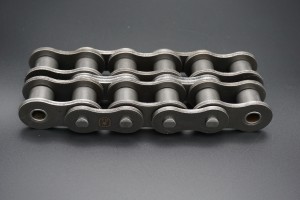Roller chains are an integral part of a variety of mechanical systems, including bicycles, motorcycles and industrial machinery. However, over time these chains are prone to wear and may need to be repaired or replaced. In this blog post, we’ll provide a comprehensive guide on how to repair your roller chain so you can keep your machine running smoothly and efficiently.
Learn about roller chains:
Before delving into the repair process, it is essential to have a basic understanding of roller chains and their components. Roller chains consist of a series of interconnected links, usually made of steel, with alternating inner and outer plates. These plates contain cylindrical rollers that make contact with the sprocket teeth, allowing the chain to transmit power efficiently. When a roller chain is damaged or worn, its performance can be compromised, resulting in reduced power transmission and potential system failure.
Step-by-step guide to repairing roller chains:
1. Evaluation chain:
Inspect the entire length of the chain for any signs of damage or wear, such as bent links, stretched or broken rollers or elongations. A visual assessment will help determine the extent of repair needed and whether replacement is required.
2. Remove the chain:
Using a chain breaker tool, carefully remove the damaged chain from the sprocket. Roller chain must be handled with care because of its tension and sharp edges that can cause injury.
3. Clean the chain:
Before repairing or replacing a chain, clean the chain thoroughly to remove any dirt, dust or grease. Soak the chain in the degreaser solution, then use a brush to wipe off any residue. After cleaning, rinse the chain with water and let it dry completely.
4. Fix curved links:
If there are several bent links, use a pair of pliers or a vise to straighten them. Gently align the bend, making sure it stays parallel to the other links. Be careful not to use too much force as this may weaken the chain.
5. Solve the elongation problem:
If the chain is noticeably stretched, it is recommended to replace it entirely. However, minor stretches can be temporarily fixed by adding a chain tensioner. These devices remove slack and improve chain performance, but should not be considered a long-term solution.
6. Reassemble the chain:
Once the chain is repaired, it needs to be reinstalled. Thread the chain through the sprockets first, making sure it is properly aligned. Use a chain breaker tool to insert the pins into the corresponding holes to reattach the chain ends. Make sure the chain is properly tensioned, as too tight or too loose can cause premature wear.
7. Lubricate the chain:
To maximize the life and performance of your reconditioned chain, it is critical to use a high quality lubricant. This will reduce friction, prevent corrosion and ensure smooth operation. Apply the lubricant evenly along the entire length of the chain, allowing it to penetrate the internal components.
Repairing roller chains can save you money, time, and prevent unnecessary downtime in various mechanical systems. By following this comprehensive guide, you can effectively evaluate and repair damaged roller chains, ensuring optimum performance and efficiency. Remember that safety is a priority when working with roller chains, and always consult professional help if needed.
Post time: Jul-28-2023

